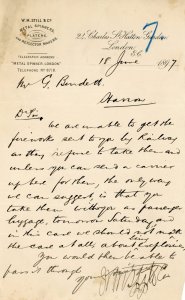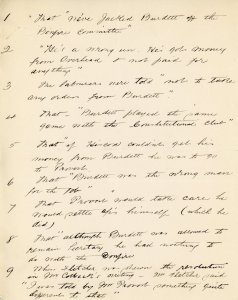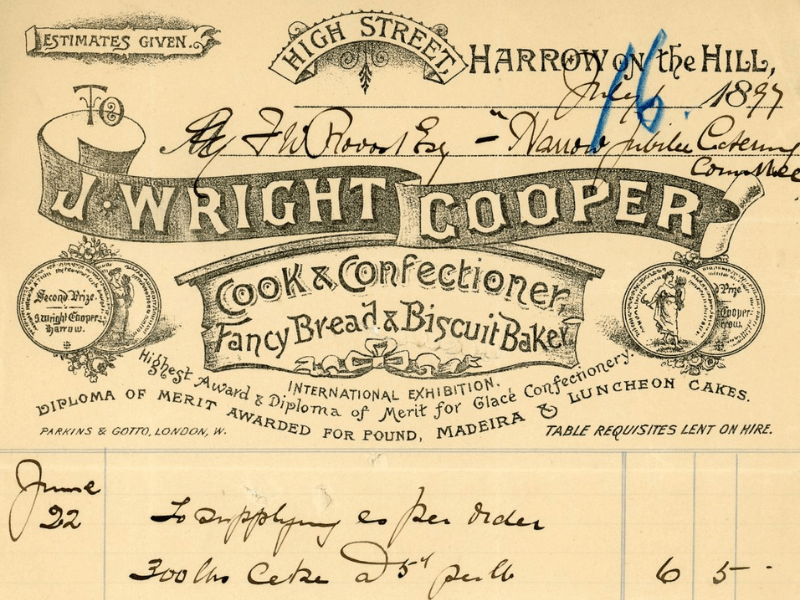As part of our Jubilee celebrations at Headstone Manor & Museum, we recently launched a temporary exhibition in the Local History room titled ‘Harrow’s Jubilees: It’s All in the Details,’ where we explore what our archive can tell us about royal celebrations in Harrow through the lens of the Diamond Jubilee for Queen Victoria in 1897.
To accompany this exhibition and for those who are unable to visit the exhibition itself whilst it is on display, here we’ll be delving a little deeper into some of the material we showcased from the archive, and placing it in the context of royal celebrations throughout the years with the help of other material we uncovered within the archive.
The Diamond Jubilee Celebrations of 1897
Whilst the archive at Headstone Manor & Museum holds a variety of materials relating to Harrow’s royal celebrations over the past 135 years, due to its sheer uniqueness and breadth, we chose to highlight a collection of invoices, accounting books, notes, and letters relating to the Diamond Jubilee celebrations held at Harrow Recreation Ground in 1897 by Harrow, Greenhill and Roxeth parishes to commemorate sixty years of Queen Victoria’s reign. These documents were donated to the Harrow Civic Centre Library in the 1970s by Harrow Building Society, which held them because the headquarters of the Jubilee committee just so happened to be located at their office, with the society’s secretary, Arthur L. Lloyd, also one of two general secretaries for the committee.

One Thousand Buns
This collection features an absolute bounty of receipts and invoices kept by the Harrow Jubilee planning committee, which let us know precisely what attendees of Harrow’s celebrations could have expected to enjoy in the way of refreshments and souvenirs, as well as which establishments these items came from.
From these receipts, as well as souvenir programmes, event tickets and local newspaper pieces from over the years, we can see that locals – especially children – did very well out of royal celebrations. An invoice from J. Wright Cooper of 64 High Street, Harrow-on-the-Hill, shows that one thousand buns were to be provisioned for 4 ½ d per dozen, and another business on the high street was to supply two thousand and ten souvenir mugs to children. Commemorative sweet treats and bric-a-brac were certainly a staple of royal occasions: in 1902 for Edward VII’s coronation, Pinner children could expect to receive a box of chocolates and a mug, whilst a voucher from George V’s 1911 coronation tells us that Wealdstone children would still receive buns and chocolates as in previous celebrations, but also cake, an orange and a mug and a medal! With Harrow’s Silver Jubilee Committee in 1935 spending over £1721 on celebrations (over £124,000 today)[1], including money on medals and souvenir tins of toffees for local children, one can imagine a fortune was spent at each of these events to make the occasion special for the youngest attendees. This was made possible through generous donations from locals and local businesses.

The Feat of Planning a Jubilee
The other key component of our exhibition is a selection of letters sent by and to planning committee members throughout the Jubilee planning process. These letters cover the logistics of arranging the delivery of fireworks by rail (omit the word “explosives” on your personal luggage to circumvent any pesky railway rules), quibbles over pricings for mugs, and most surprisingly of all, complaints of character-damaging rumours amongst the committee, which were politely yet completely brushed aside by the general secretary. There were far too many letters for us to feature in the exhibition space itself, including all of the thank-you letters sent by those who made contributions to the proceedings and received medals for their efforts. In these letters, the senders gush over the brilliant execution of events, and one can really sense the small politics of local life at play, with people vying for position as top model resident even after the event had wrapped up.
Both local newspaper reports and council meeting minutes can certainly give us indications of the difficulties that have arisen in planning such events in other years; we know for example from Council’s meeting minutes for the 1953 Coronation Celebration Committee [2] that there were concerns amongst residents regarding council street decorations due to the threats of inclement weather. However, this collection of letters from 1897 provides us with such a rare documentation of the inner workings of a royal celebration from start to finish; each letter fleshing out our knowledge of these events within the community a little further and in the words of those involved.
If you have not already, we do hope you will be able to visit our temporary exhibition before it closes on 3rd July 2022, but if not, we hope that this blog post has provided an interesting glimpse into some of the documents our archive preserves, and will encourage you to visit us for our future exhibitions.


Funding provided by a grant from the National Archives
[1] Silver Jubilee Committee Meeting Minutes, from 22nd May 1935 (https://moderngov.harrow.gov.uk/Data/Council/19350604/Minutes/010_silver%20jubilee%20committee_22%20may%201935.pdf#search=%22silver%20jubilee%20committee%22) [2] Coronation Celebration Committee Meeting Minutes, from 21st May 1953 (https://moderngov.harrow.gov.uk/Data/Council/19530620/Minutes/008_Coronation%20Celebrations%20Committee_21%20May%201953.pdf)

